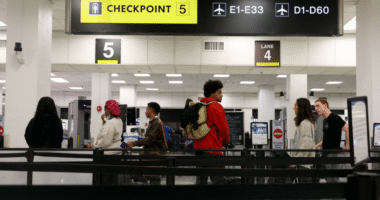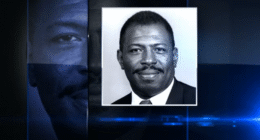“Carry On,” available now on Netflix, offers a fresh perspective on holiday journeys. This action-packed film features Taron Egerton as a charismatic TSA agent, set predominantly within the confines of an airport. While airports are a familiar backdrop for many, this movie presents an airport like never before.
Under the direction of Jaume Collet-Serra (known for “The Commuter,” “Jungle Cruise,” and “Black Adam”) and co-written by T.J. Fixman and Michael Gree, “Carry On” follows Egerton’s character, Ethan Kopek, a TSA agent at LAX, who becomes embroiled in a dangerous plot initiated by a mysterious traveler portrayed by Jason Bateman. Ethan must race against time to thwart a potential threat.
Featuring an ensemble cast including Sofia Carson, Danielle Deadwyler, Logan Marshall-Green, Sinqua Walls, Theo Rossi, Josh Brener, and Dean Norris, “Carry On” showcases the intricate workings of airports in a new light. Curious about the filming locations of “Carry On”? Let’s delve into whether the movie was shot in a real airport or if it’s simply movie magic. Read on to uncover more about the filming of “Carry On.”
Carry On was filmed on location in an airport, but that airport was not LAX. Instead, the Carry On movie filmed in an old, out-of-use wing of the Louis Armstrong New Orleans International Airport, aka MSY, in New Orleans, Louisiana. The production took over an out-of-use terminal at the airport, and transformed it into LAX.
In a recent interview with Decider, star Sofia Carson said, “It is such a gift whenever you get to create a movie in practical sets, and not green screen. We were physically inside of an airport, which is so exciting. The whole airport was transformed to really look and feel like LAX.”
Director Jaume Collet-Serra, in an interview for the Carry On production notes, agreed, though added the location also posed a challenge. “It was such a thrill to have the whole space at our disposal and be able to explore all these areas of an airport that we don’t normally get to see as passengers. However, at the end of the day, shooting a movie in one location is inevitably challenging, as you want to put your scenes in different spaces that don’t all look the same.”
The director went on to explain that he used “interesting camera rigs, lenses, reflections, and distortions” in order to create more variety between the shots. While the film had free rein of this terminal, and also got to shoot on the tarmac, the production was not allowed to enter the functioning parts of the airport, or they would risk breaking the law.
To give MSY the LAX makeover, production designer Diane Lederman focused in on details. “When this terminal was shut down, everything was sort of left defunct and it deteriorated,” Lederman said in an interview for the film press notes. “A big part of our job was reviving it, but we also wanted that level of reality so we went to several iconically Los Angeles-specific shops and restaurants like Lemonade and Pinkberry and asked if they’d partner with us and lend us their signage.”
But when it came to the security technology, the production had to make their own props. “You can forget about renting or buying an actual machine that TSA uses,” Lederman explained. “They cost hundreds of thousands of dollars and there’s a yearslong waitlist for them. It’s not happening. So we had to make it all ourselves. We had to make molds with layers of manufacturing, painting, sanding, creating these amazing, sophisticated machines that look very much like all the latest baggage scanners that are all in the modern airports.”
The production also consulted real TSA agents and LAX employees to make sure the film looked as realistic as possible. “They read the script and gave us notes if anything we’d written wasn’t accurate with actual airport protocol,” Collet-Serra said in that same interview. “They put our actors through proper TSA training before we shot the movie, and they were on set to advise us if anything didn’t look realistic.”
For his part, Collet-Serra said he certainly learned a lot about the TSA and the inner workings of a modern airport. “I was beyond impressed with the rigor of training every single airport employee has to go through, and with how detailed and specific the chain of command is for any major security decision at an airport.”
(function(d, s, id) {
var js, fjs = d.getElementsByTagName(s)[0];
if (d.getElementById(id)) return;
js = d.createElement(s); js.id = id;
js.src = “//connect.facebook.net/en_US/sdk.js#xfbml=1&appId=823934954307605&version=v2.8”;
fjs.parentNode.insertBefore(js, fjs);
}(document, ‘script’, ‘facebook-jssdk’));

















